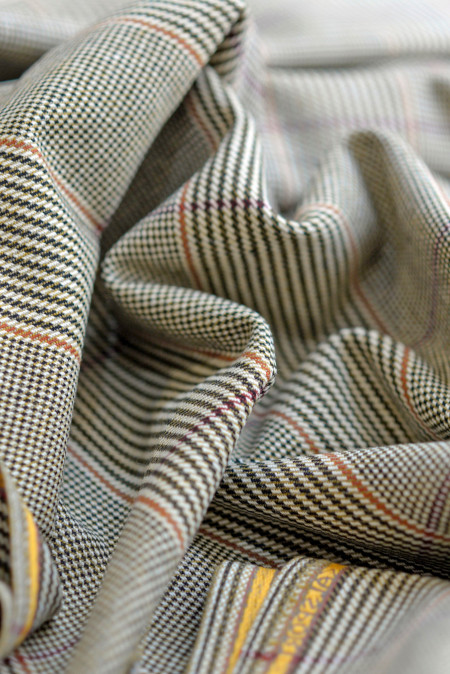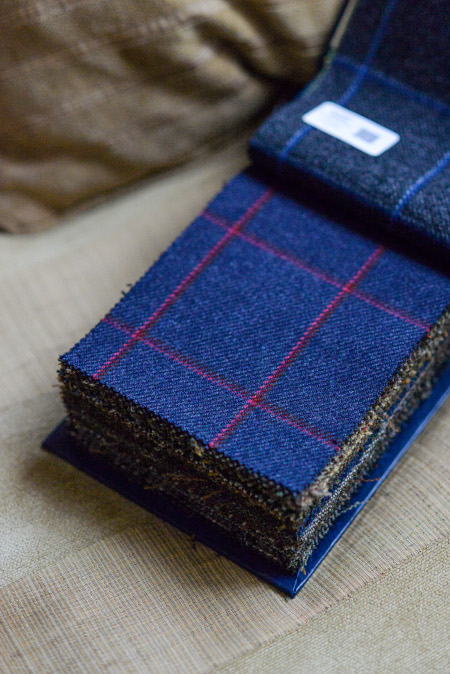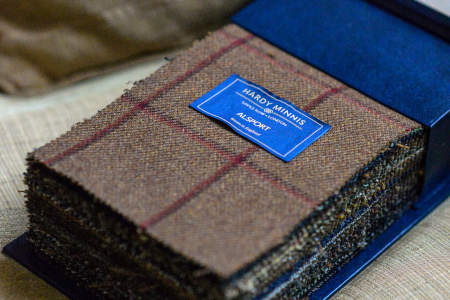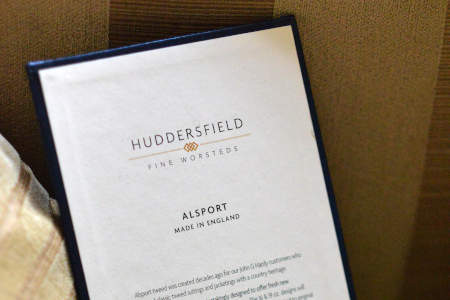JOURNAL
Alsport: Hardy in more than one sense
Words & photography: Lee Osborne @sartorialee

Having had a rather mild climatic culmination to 2022, the recent arrival of proper sub-zero temperatures has once
again got us waxing lyrical about our colder clime sartorial armoury. Delve straight into the delights of our
legendary Alsport bunch, created decades ago for our John G Hardy customers, those country heritage appreciating types
of a Tweed suit and jacketing persuasion. Whether it’s a
Gun Club Check,
windowpane or
Herringbone we have every
eventuality covered.
Like so many traditional practices derived from the awe-inspiring Scottish countryside, characterised by dramatic
mountains, glens, forests and moorlands, Tweed, a hard-wearing, all-weather textile, draws inspiration from the
surrounding flora and fauna of its verdant landscape, iconically peppered by fluffy cloud-resembling sheep.
Originating since the early 18th-Century, Tweed is a subtly-patterned fabric made predominantly of Cheviot sheep’s
wool which is subsequently dyed, spun and woven. Crafted on outsized looms which, in turn, churn out voluminous yarns
originally dyed with native lichen and wildflowers.


There’s an interesting backstory as to how its name was coined: the fabric was originally named “tweel,” which is
Scottish for twill, the most popular weaving technique for making tweed. A London fabric merchant misread an order
mistaking “tweel” for “tweed,” on the assumption that the fabric was named after the River Tweed which runs through
the Scottish Borders. The name stuck and the fabric has been referred to as tweed ever since.
Tweed, originally worn by farmers, became popular with the upper echelons of society across the British Isles after
1848, when Prince Albert acquired Balmoral Castle and designed the unique Balmoral tweed crafted by our very own Hardy
Minnis. Neighbouring Highland estates followed suit, commissioning their very own “estate tweeds” in order to
distinguish themselves during the hunting season and other outdoor pursuits.
Our latest offerings fuse contemporary with timeless classics and are available in 16 and 19oz weights to ensure you’re classically attired to original outdoor pursuits specification.
Our latest offerings fuse contemporary with timeless classics and are available in 16 and 19oz weights to ensure you’re classically attired to original outdoor pursuits specification.


But you don’t need to be Laird of a behemothic Scottish Estate or participate in field sports to wear Tweed: the
beauty of it is that it can be broken up really rather well and worn as separates. Sure if you want to embrace the full
head-to-toe look it can look great as a three-piece - our 258115
Gold check twill being a case in point - but a grey Herringbone jacket (such as our
520153) worn with a white Oxford button-down shirt, dark
selvedge jeans and brown Vibram-soled brogues is a smart combination on less formal occasions.
As the famous Scottish proverb goes “Cast not a clout till May be oot”. In other words don’t stow your winter togs away too soon, your Tweed will last you long into spring, particularly north of the border.
Don’t miss our focus on Donegal Tweed, a coarse fabric of world repute that was originally handwoven by part-time weavers, fishermen and farmers, which is also part of the Alsport bunch, here: https://www.hfwltd.com/journal/1
As the famous Scottish proverb goes “Cast not a clout till May be oot”. In other words don’t stow your winter togs away too soon, your Tweed will last you long into spring, particularly north of the border.
Don’t miss our focus on Donegal Tweed, a coarse fabric of world repute that was originally handwoven by part-time weavers, fishermen and farmers, which is also part of the Alsport bunch, here: https://www.hfwltd.com/journal/1

